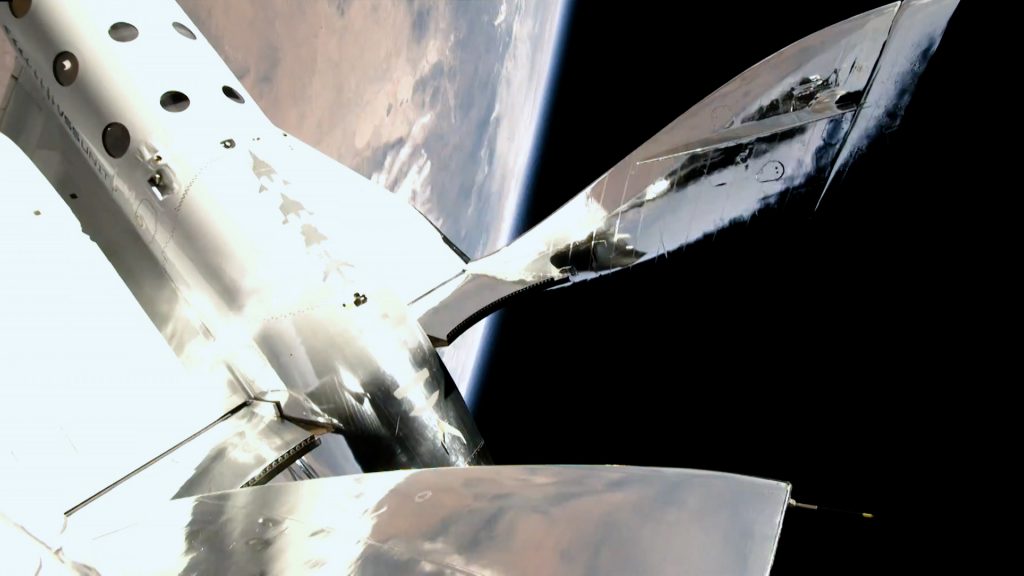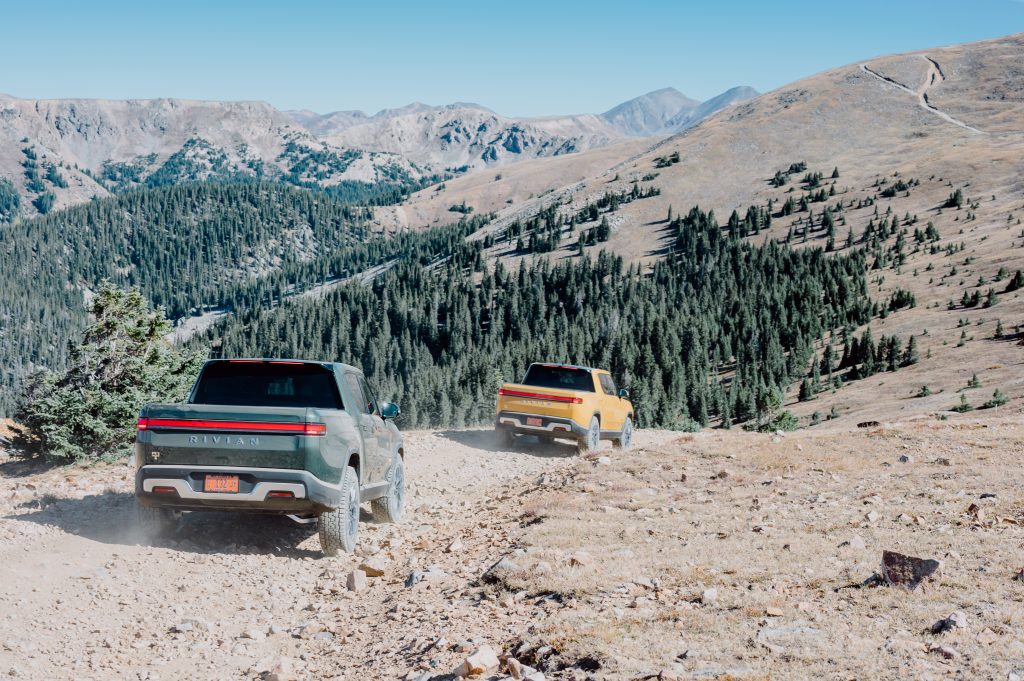Attending Virgin Galactic’s Unity 22 Launch at Spaceport America
Mission specialist and astronaut Colin Bennett speaks with us in New Mexico after the inaugural flight

With temperatures hovering in the low 90s and a tarantula or two scuttling across the runway, Virgin Galactic’s VSS Unity aircraft swept into the skies for its 22nd space flight, the first with a full crew, which included founder Sir Richard Branson in its cabin. As Unity soared to an altitude of 53.5 miles, leaving Spaceport America, New Mexico and the Chihuahuan Desert behind, the flight established a new benchmark in the quest toward commercial space travel. We were on-site to witness the feat and its smooth conclusion—all of which were the result of a thousand engineers, roughly 17 years of work and two significant technical developments.
For all the statistical successes of the event—which came with plenty of theatrics (from Stephen Colbert hosting to Elon Musk dropping by, recording artist Khalid unveiling an exclusive track, and plenty of custom Land Rover Astronaut Editions)—nothing carried as much gravity as our conversation with Lead Flight Operations Engineer, mission specialist and astronaut 003, Colin Bennett, who traveled into space for the first time with Unity 22. Bennett (who carried a flag from his high school and one from University of Illinois as mementos) joined Branson; Beth Moses, Chief Astronaut Instructor; Sirisha Bandla, Vice President of Government Affairs and Research Operations; and pilots Dave Mackay and Michael Masucci.

“I’ve been at Virgin Galactic for six years and it began with getting to know the vehicle, our operations and how to work with the pilots,” Bennett tells us from Spaceport City after successfully completing the mission. In the lead up to the flight, however, Bennett and the crew’s training increased, in the specific program designed for their future customers. Onboard, Bennett’s primary roll was to evaluate the cabin, the procedures they use and even “the [physical] maneuvers to figure out how the customers might want to translate their weightlessness around the cabin.” This involved prepping in a previous zero-G flight to adjust to weightlessness environments.
Prior to the landmark Unity 22 flight, Bennett says he felt a healthy amount of nervousness. Upon launch, he says he was “surprisingly calm.”

The two aforementioned innovations that set VSS Unity apart in this new space age are its air-runway takeoff, which is propelled by a mothership named VMS Eve that latter detaches from Unity, and the feather-like return it makes during re-entry—employing advantageous elements from both winged and capsule crafts. Simply put: Eve escorted Unity skyward, they released one another, Unity’s rocket kicked in and it escalated to speeds in advance of Mach-3. Then it reached apogee—its highest point away from Earth. Weightlessness occurred and then Unity glided back toward the planet, landing at Spaceport America, to be used again.

“I was expecting more of a drop-tower effect, like in a theme park, with the release,” Bennett says. “But it’s just fun. It’s nothing too intense. I think that’s because in our minds, we know the rocket is about to fire. As soon as that kicks in, the acceleration forward is unbelievable.” As they reached apogee, Bennett began running his evaluations until he heard Moses remind everyone to look out the window.
“You cannot prepare yourself for that,” he says. “The acceleration, you know how that feels, you can kind of offer yourself insight as to how that will be. But the view—I have seen every video and photo, people have told me their own experiences, but nothing could have prepared me for what I saw.” Bennett says it’s hard to talk about. “I have not had a chance to process it yet, but it is all there. I know what I saw. Over time, I think I will be able to digest what it really means. I will never forget.” Branson and Bennett both speak of the overview effect, a perspective-shifting experience that comes from looking at Earth from afar. Further, Bennett references the vibrancy of the colors—the serenity of it all. A sense of pause.

Bennett says the design of Unity’s cabin, which is new, also felt good throughout the experience. “It’s very elegant, very smooth and very fit for purpose. The seat feels relaxed. I have flown many aircraft as a flight test engineer where comfort is not the primary driver of the design. This was totally different. You are in a relaxed pose for the climb, that’s very easy to use but safe and sturdy.”

As for their evaluations, he says, “Beth focused on more basic objectives: ‘Can a person get out of and into their seat,’ ‘Can they move up to see the pilot?’ She evaluated the forward cabin, primarily. I was looking for anything we did not predict on the ground about the weightless environment. You can test hundreds and thousands of times, but at some point you need to go do it,” he says.

Through our discussion, Bennett’s awe and enthusiasm act as a reminder that so many people dream of space and the opportunity to experience it—to see the curvature of the planet, the contrasting blue of the orb against the darkness—might be moving closer. In fact, Branson’s even opened a raffle, in partnership with Omaze, to allow one person a chance to win two seats on a future Virgin Galactic flight, with $5 buying 50 entries. Proceeds benefit the non-profit Space for Humanity.

When he joined the company in 2015, Bennett did not expect to be in this position. “I came to Virgin Galactic with a certain experience that moved me toward this kind of role, being a flight test engineer and flying with pilots in various vehicles. I had a career path that was heading this way, joining a space line, but I never would have expected that it would have ended up in the spaceship with Sir Richard Branson on the biggest day of our company’s history.”

“Our customers are going to love it and I think they’re going to want to do it again,” he says. “I want to do it again.”
As for what comes next, Bennett says, “I will want to jump right back in with the team to get back to my day job and help finish up this flight test program so that we can roll this out to customers; the hundreds and thousands of more people we can connect with the wonders of space.” For Branson, it’s two-fold. First, it’s turning his dream into a commercial space service by 2022, but it’s also committing more to the health of the planet through his foundation, something he was reminded of when gazing at it from above.
Images courtesy of Virgin Galactic












